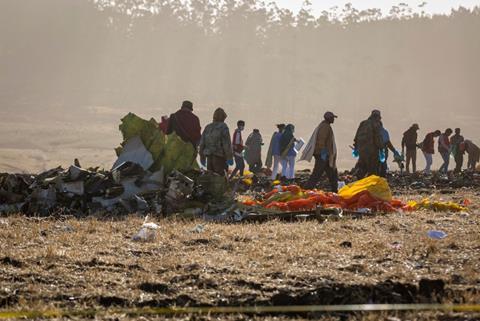A US safety committee has recommended that the Federal Aviation Administration improve its process for evaluating safety risks associated with in-service aircraft types.
The recommendations, detailed in a reported released on 22 June, address the same process the FAA used in late 2018, shortly after the first 737 Max crash, to evaluate the type’s troubled Maneuvering Characteristics Augmentation System (MCAS).
That assessment predicted that MCAS, if not fixed, could cause 15 more fatal 737 Max crashes. Despite the finding, the FAA allowed the 737 Max to remain in service until after a second crash, in March 2019.

The latest report comes from an aviation safety committee formed in response to those crashes. Specifically, the report was required by a December 2020 law that included several provisions intended to improve the FAA’s safety oversight.
The report evaluates the FAA’s “Transport Airplane Risk Assessment Methodology”, known in regulatory-speak as TARAM. That method “outlines a process for calculating risk associated with continued-operational safety issues in the transport airplane fleet”, says the safety committee’s report.
The risk assessments account for factors including the number of times a failure is likely to occur, the likely severity of the failure and the likely number of fatalities it could cause.
The report makes several recommendations, including that the FAA better define the type operational data needed to properly evaluate risks, and how that data should be monitored and collected. It says the FAA must undertake that work in cooperation with airlines and aircraft manufacturers.
The report also recommends that the FAA better evaluate the impact on its safety assessments of “human performance” – including the actions of pilots, flight attendants and maintainers.
Additionally, the report notes that the FAA employs “only one” person who has expertise in its risk-assessments methods. It recommends that the agency, within six months, “formally designate multiple employees within its organisation as experts for the Transport Airplane Risk assessment Methodology”.
Asked to comment, the FAA says, “We welcome outside scrutiny and are carefully reviewing the report”.
Congressman Peter DeFazio, who played a role in writing the 2020 law, says the report “makes it very clear that the FAA can better fulfill its responsibility”.
“The FAA must implement the critical recommendations included in this report without delay,” DeFazio adds.
The report was written by a committee whose members included representatives from universities and current and former staffers from companies including Boeing, GE Aviation, Joby Aviation and American Airlines.
The FAA used the TARAM process to evaluate the 737 Max’s MCAS following the October 2018 crash of a Lion Air 737 Max 8.
The FAA published its resulting report, called a “Quantitative Risk Assessment”, in December of that year. The assessment determined that MCAS, if not fixed, would cause 15 more fatal crashes, and kill nearly 3,000 more people, during the Max’s in-service life.
Statistically, the analysis predicted that a 737 Max would crash “every two years for the next 30 years”, with each crash killing everyone aboard, according to a US Congressional report.
Still, the FAA did not immediately ground the Max; instead, it issued an airworthiness directive seeking to make pilots more aware of how to counter MCAS.
That decision reflected the FAA’s expectation that “Boeing would have a fix for MCAS by July 2019”, Congress’ report said. “Until MCAS was fixed, however, the aircraft and its passengers were still at risk.”
The FAA grounded the 737 Max in March 2019 following the second crash, that of an Ethiopian Airlines 737 Max 8.


























